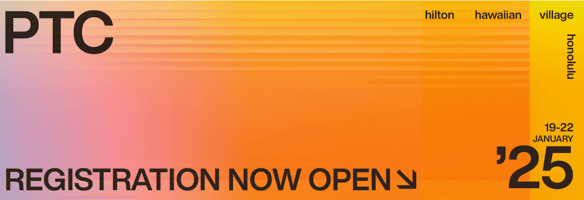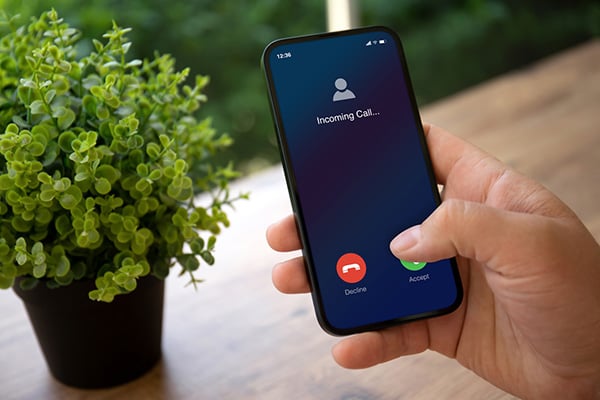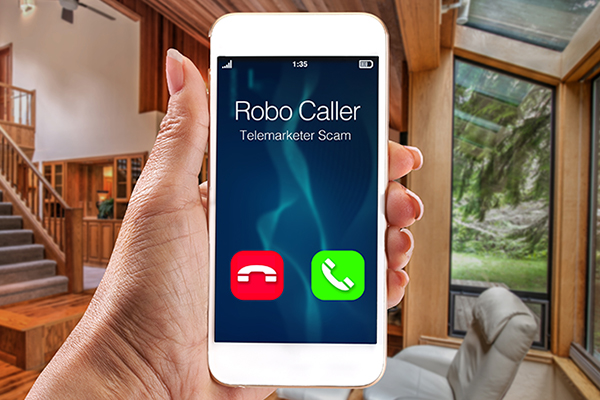YouMail's executive team is heading to Hawaii for PTC'25 this upcoming January. We're excited to...


Phone Number Redemption empowers legitimate enterprises to regain control of their phone numbers, ensuring a secure and reliable communication channel free from the disruptions of spoofers, spammers and scammers.
Our service is driven by Trusted Calling, where advanced technology and verified caller systems work together to establish authenticity, eliminate mislabeling, and prevent legitimate calls from being mistaken as spam. YouMail’s unique approach focuses on the content of the calls, in addition to the behavior.
This fosters trust, boosts call answer rates, and strengthens customer relationships, empowering businesses to communicate effectively and confidently with their valued audience. Say goodbye to unwanted calls, and hello to a new era of trusted, reliable communication!
When consumers ignore a phone call from your brand, assuming it's spam/invalid, the impact is significant. There are real costs associated with every missed call, such as missed opportunities for engaging with customers, addressing inquiries, or providing valuable information.
It also leads to a decline in customer trust and loyalty, as they may perceive your brand as untrustworthy and, ironically, because your brand’s calls are being mislabeled as spam, the false perception that there is an absence of legitimate calls from your brand, which results in the consumer seeing your brand as unresponsive. Consistent call avoidance should prompt businesses to explore alternative communication channels, potentially shifting consumer behavior towards other methods of contact, such as emails or social media, which carry even more risks and limits.
With increasing rates plaguing communication channels, spam calls and phone scams have become a concerning trend. As these malicious activities become even more sophisticated, consumers, carriers, and businesses face growing challenges in distinguishing legitimate calls from scam calls, eroding trust in phone communication. With U.S. consumers receiving just under 5.1 billion robocalls in August 2023 alone, the impact is far-reaching, as heightened skepticism towards unknown callers can hinder essential business-customer interactions, leading to missed opportunities and a breakdown in effective communication.

Machine learning algorithms are used for detecting spam calls, but they can also misclassify legitimate numbers. These algorithms most often look only at changes in calling behavior, relying solely upon unique patterns that don’t always distinguish spam from genuine calls – this leads to false "spam risk" labels. The industry’s major players all have unique algorithms, and because their algorithms are closely-guarded secrets, there is no industry autonomy, making it impossible to predict who (analytics engines and carriers alike), or what behavior change, has driven their decision to label a call as potential spam.
Number spoofing is a tactic where scammers steal phone numbers and manipulate caller IDs to make themselves appear as legitimate entities, tricking call protection systems into labeling these calls as “spam risk” when they’re actually fraudulent.
Blacklists (e.g., DNO lists for ISE) contain known spam numbers and help block unwanted calls, but they can also lead to mislabeling of legitimate numbers due to false positives or spoofing.
User reports of spam calls can influence mislabeling, as false or misleading reports, such as when a customer believes they never “opted in” to receive a phone call, may trigger “spam risk” labels on legitimate numbers. Because it’s difficult to determine why a consumer either ignored or rejected an incoming call, carriers are limited to user reports for call treatment and DNC databases.
Shared characteristics between legitimate and spam numbers, such as call patterns or geographic locations, can contribute to mislabeling, where genuine calls are incorrectly flagged as “spam risk” based on similar attributes with known spam calls, ultimately revealing the flawed reasoning behind this to be nothing more than “because they are spam.”
Preventing Mislabeling requires a proactive approach from businesses through the use of effective tools and practices. Enterprises can take proactive measures by setting up monitoring services that alert them if/when calls are being labeled as spam, provide the content as definitive evidence of call intent, and identify the source of the label. Regularly reviewing user reports and promptly addressing any issues can further minimize mislabeling occurrences, while continuously fine-tuning machine learning algorithms can improve the accuracy of call identification. Maintaining a clean and up-to-date phone number reputation through Number Reputation Management can help avoid false flags on call blocking systems, but lack of insight behind behavior-driven algorithms requires ongoing monitoring. Alternatively, branded caller IDs and verified call systems ensure legitimate calls are easily recognized and trusted by recipients, however these are more susceptible to brand spoofing.
With increasing rates plaguing communication channels, spam calls and phone scams have become a concerning trend. As these malicious activities become even more sophisticated, consumers, carriers, and businesses face growing challenges in distinguishing legitimate calls from scam calls, eroding trust in phone communication. With U.S. consumers receiving just under 5.1 billion robocalls in August 2023 alone, the impact is far-reaching, as heightened skepticism towards unknown callers can hinder essential business-customer interactions, leading to missed opportunities and a breakdown in effective communication.
While Trusted Calling offers significant benefits, it may encounter challenges related to implementation complexity and adoption. Establishing a universal Trusted Calling framework requires coordination among various telecom providers and regulatory bodies, which can be time-consuming and resource-intensive. Trusted Calling also opens the door for new kinds of number spoofing, including, but not limited to, branded calling and spoofed caller ID. To deliver a truly qualified Trusted Calling platform, multiple data sources need to be considered.
to identify from what network that customer’s call should be initiated
to monitor and determine the intent of a call
to track and understand the behavior of phone numbers, enabling the identification of legitimate versus malicious callers
to accurately label and verify incoming calls, enhancing recognition and trust for recipients
Phone Number Redemption plays a vital role in safeguarding business communication channel integrity. By reclaiming and restoring compromised numbers, enterprises can establish a trusted, reliable image that fosters positive customer interactions. As the fight against spam calls and phone scams intensifies, the importance of Phone Number Redemption becomes even more apparent, allowing businesses to take back control of their communication channels and maintain strong customer relationships. Implementing this process can ultimately lead to improved call answer rates, increased customer trust, and a more positive overall experience for both businesses and their valued clientele. The most effective remediation strategy is to work directly with the carriers, providing contractual evidence that definitively determines the call’s intent.
YMPS is considered the telecom industry’s gold standard in data reliability. Our unique market position, driven by our comprehensive data source and built upon our award-winning call filter and message protection application, is available direct-to-consumers. We’ve also partnered with the majority of US Telecom leaders, even further expanding our sensor network to include millions of additional honeypot numbers and expansive DNO lists, and offering even more solutions to stop bad actors, build trust, and qualify branded calling. With full US, Canada, and UK coverage, our sensor network is carrier agnostic and offers complete geographic diversity, with access to:
It's the blend of all these different elements that allows us to provide real insight.

YMPS offers a variety of solutions to help streamline and resolve false labeling, as well as provide ongoing protection and remediation for your local and toll-free numbers. In just 15 minutes, we can show you the potential risks currently facing your brand, as well as how to remediate any potential damage or reduce risks from fines (or worse) to carrier networks.
To increase call answer rates, consider using YouMail’s Trusted Calling, which combines verified caller systems with our advanced technology that includes compliance monitoring, trusted calling solutions, brand spoofing protection, and traffic/number behavior insights to establish authenticity, eliminate mislabeling, and prevent your legitimate calls from being mistaken as spam.
People may not be answering your calls due to caller ID mislabeling, lack of familiarity with your number, or a perceived high volume of spam calls.
To earn customers' trust over phone calls, use verified caller ID platforms, be transparent about your identity, and provide valuable and relevant information during the call.
Mislabeling removal refers to the process of rectifying false "spam risk" labels on phone numbers by verifying the caller's legitimacy and taking proactive measures.
A verified call is a system that authenticates caller identities to ensure legitimate and trusted communication.
Your phone number may be labeled as "Spam Likely" due to its association with spam calling behaviors, compliance violations, consumer feedback, or number spoofing tactics used by scammers.
To remove the "Spam Likely" label, the most effective remediation tactic is to provide evidentiary support that clearly identifies the caller’s intent and compliance.
Proactive measures to avoid mislabeling include maintaining a positive number reputation, promptly addressing user complaints and/or false reports, and fine-tuning machine learning algorithms.
The rise in spam calls and phone scams refers to the increasing frequency and sophistication of malicious activities impacting communication channels. Considering the success rate of phone scammers, where 68.4 million Americans lost a total of $39.5 billion USD to scam calls in 2022 (with each victim losing an average of $577 USD) – up from 59.4 million Americans (and a 32.5% increase from the $29.8 billion USD lost) in 2021 – it's no wonder that scammers are scaling up and intensifying their criminal enterprises to levels never before seen.
Blacklists and user reports can impact phone calls by flagging certain numbers as potential spam or fraudulent, leading to mislabeling. It is important to stay up to date on opt-in/TSR requirements, and have access to multiple data sources.